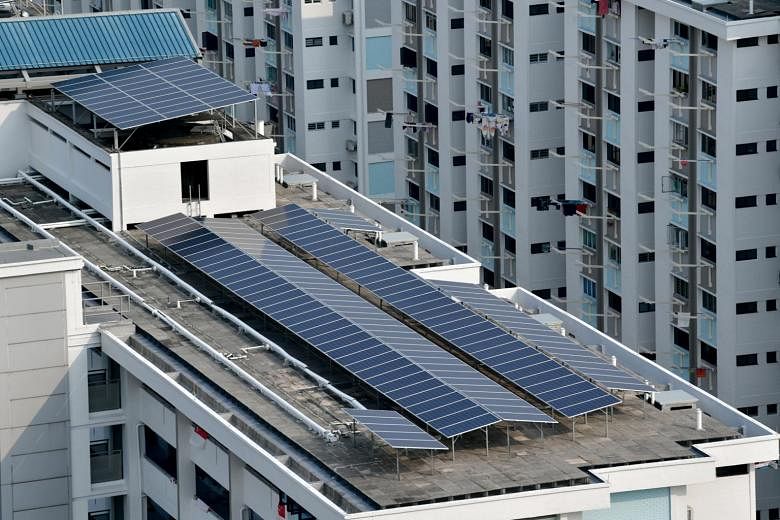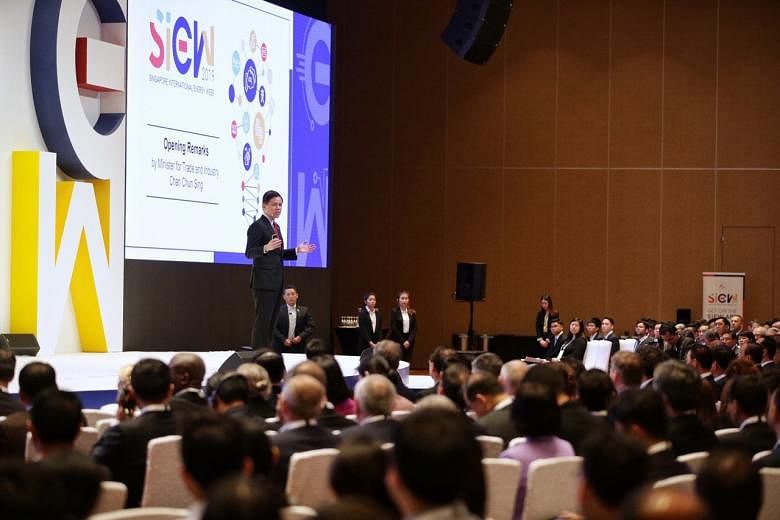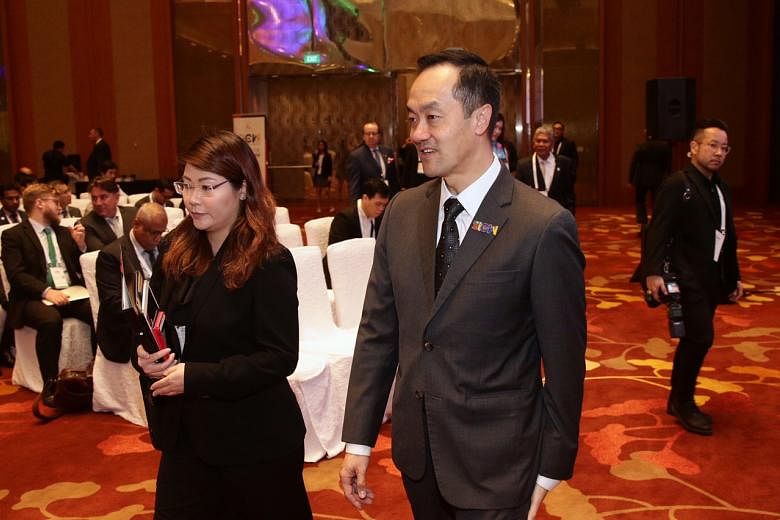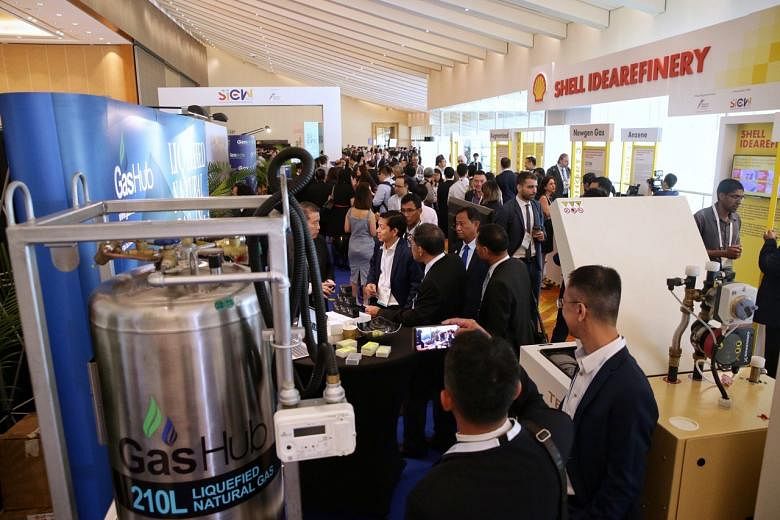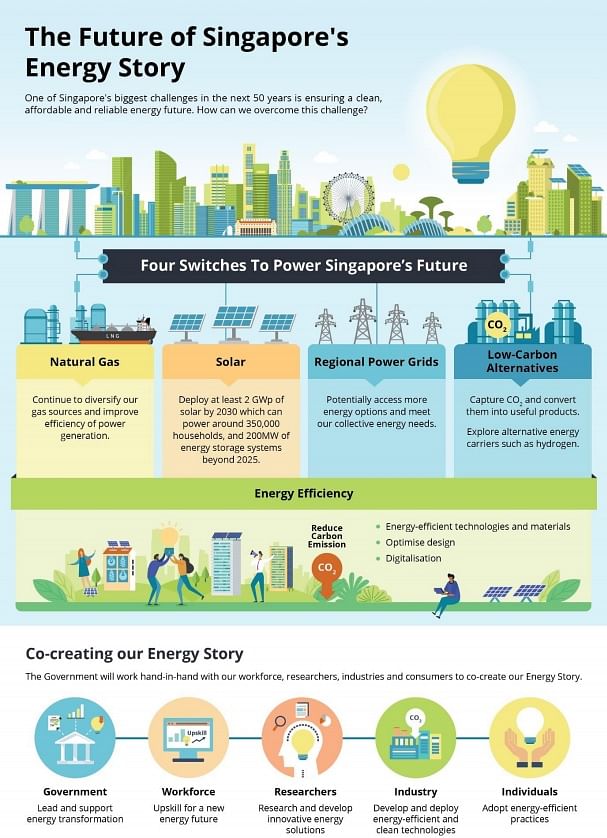SINGAPORE - The Republic is ramping up its drive to soak up more energy from the sun, amid growing global awareness on how fossil fuels are contributing to climate change.
By 2030, Singapore wants to ramp up its solar capacity by more than seven times from current levels, and increase the current 260 megawatt-peak (MWp) of installed solar capacity to 2 gigawatt-peak (GWp).
This is enough to meet the annual power needs of around 350,000 households in Singapore, or about 4 per cent of Singapore's total electricity demand today.
The new 2GWp target for Singapore was outlined by Minister for Trade and Industry Chan Chun Sing on Tuesday morning (Oct 29) at the opening of the Singapore International Energy Week held at the Sands Expo and Convention Centre.
Solar energy is the most viable renewable energy option for Singapore, but harnessing it to power the nation did not come without obstacles.
Singapore's small size, the intermittency of sunshine due to cloud cover and urban shading, and cost of solar deployment were some challenges.
Currently, solar energy contributes less than 1 per cent to Singapore's total energy mix.
More than 95 per cent comes from natural gas, the cleanest form of fossil fuel. Other sources, such as oil and coal, round up the mix.
But just as how Singapore pushed the boundaries on water technologies and thrived, so too will the nation tackle the energy frontier, said Mr Chan.
Singapore does not have any natural sources of water but has overcome the erratic nature of weather-dependent sources of water, such as rainfall, with desalination and by recycling used water.
The next frontier for Singapore, said Mr Chan, is energy.
Singapore started moving on this front since the early 2000s, when it switched from oil to natural gas - a cleaner fuel which Singapore now imports in liquefied forms from all over the world and through pipes from neighbouring Indonesia and Malaysia - to power the nation.
The next step would be to increase the adoption of solar energy here, Mr Chan said.
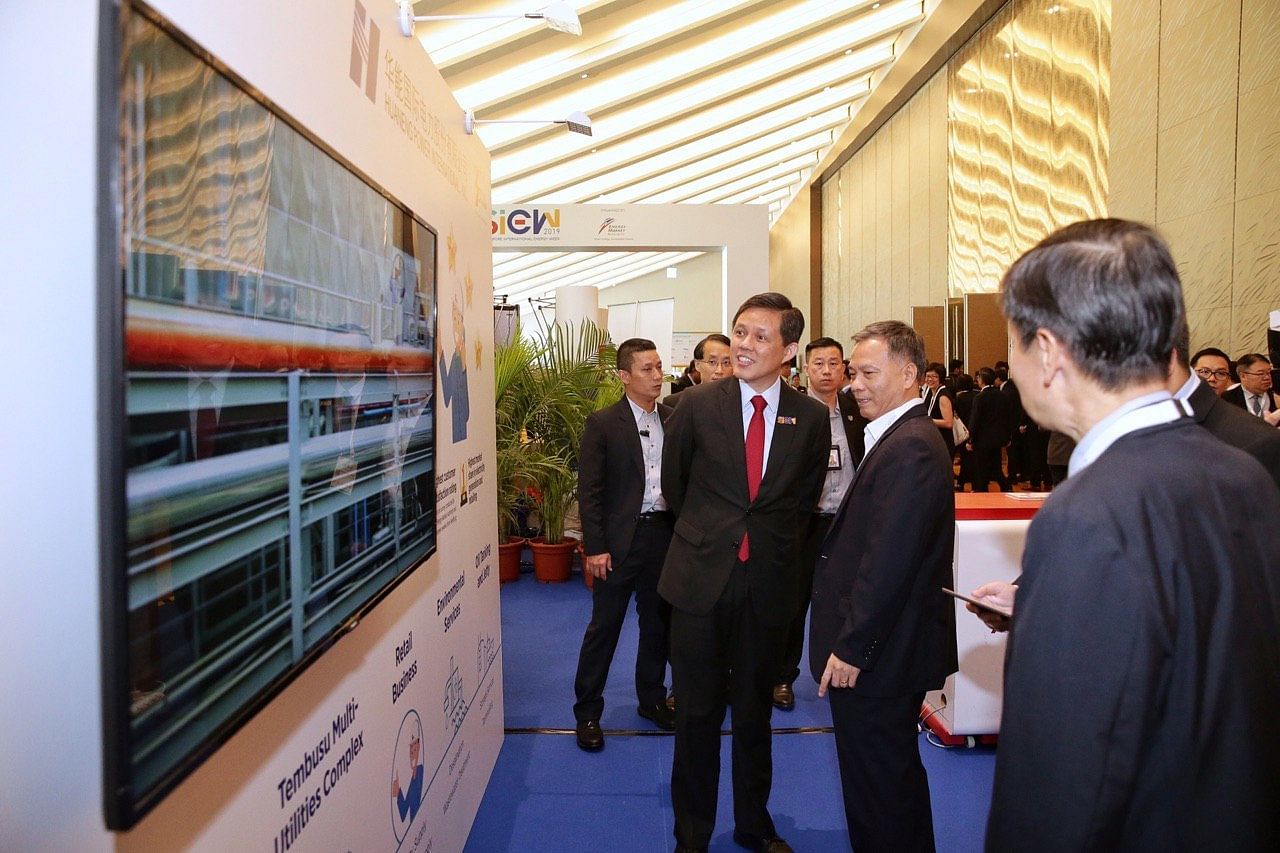
In the longer term, Singapore could be plugged into a regional power grid to trade electricity with its neighbours, which would increase its energy security, even as the Republic invests in research and development in other low-carbon technologies that, unlike solar energy, have yet to become commercially viable.
This includes research into the possibility of using "green" hydrogen as a fuel, and in carbon capture utilisation and storage technologies - innovations that could suck planet-warming carbon dioxide out of the air and convert it into useful products, such as chemicals and building materials.
Meeting the target
The Government is looking into a few ways to meet the 2030 solar target, said Mr Chan.
The first is to maximise the deployment of solar panels onto available surfaces, including rooftops, reservoirs, offshore sea space, and on the vertical surfaces of buildings.
Just as Singapore had turned two-thirds of Singapore's land surface area into a water catchment area, the Republic will look to do the same for solar, he said.
By 2020, one in two HDB rooftops will have solar panels deployed.
Under the recently awarded SolarNova Tender 4 announced earlier this month, solar panels will also be deployed at 30 schools, as well as 13 Ministry of Defence sites.
Industrial developer JTC will also be deploying mobile solar panels and substations on vacant land, such as existing plots on Jurong Island, not required for development in the near future under its SolarLand initiative.
Mr Chan said Singapore will also invest more in research and development into energy storage systems. These essentially function as batteries when hooked up to solar systems, helping to overcome the challenge of intermittent sunshine.
Experts weigh in
Experts approached by The Straits Times said Singapore's target of having 2GWp of installed solar capacity by 2030 is an ambitious target - but one that was achievable if certain conditions are met.
Professor Subodh Mhaisalkar, executive director for the Energy Research Institute at the Nanyang Technological University (ERI@N), pointed to Singapore's limited land area and built-up environment, saying solar panels have to be deployed on a larger scale.
He said: "Other than deploying solar panels on Housing Board rooftops, we will need very large contributions from other sources, including residential and industrial buildings, and also deploy solar panels on infrastructure such as walkways and depots, on building facades and on water bodies such as reservoirs and the sea, to name some possibilities," Prof Subodh told ST.
Another factor to consider is oil and gas prices, said Dr Thomas Reindl, deputy chief executive of the Solar Energy Research Institute of Singapore (Seris) at the National University of Singapore .
"The target seems achievable, as long as oil and gas prices don't fall well below today's levels," he said.
He added: "This is important, as the cost of solar electricity in Singapore competes with conventional electricity. For larger rooftop installations of more than one MWp, the cost of the generated solar electricity is already lower than the typical commercial electricity rates, and in many cases even lower than the wholesale market price."
While the increase in solar deployment is likely to occur in tandem with an overall increase in energy use, Prof Subodh and Dr Reindl are confident that solar would still be able to contribute about 4 per cent to Singapore's energy mix by 2030, due to Singapore's focus on energy efficiency.
Dr Reindl said that while some increase in energy demand would be from population growth, the main impact would come from existing and new industries, and possibly the shift from combustion engines to electric cars in the transport sector.
He added: "In all cases there are already measures or plans underway to proactively manage future electricity demand. Therefore, I am confident that the 4 per cent of total annual electricity demand by 2030 is achievable."
Reducing energy usage through design
Even as Singapore moves to green its fuel mix, the country should also see how its energy usage can be managed, Mr Chan said.
In charting Singapore's progress toward a future with a sustainable, reliable and affordable supply of energy, Mr Chan said managing energy demand was also important.
"I think we need to see how we can save on our usage of energy," he said. Key to this is design, he noted, citing the unnecessary cooling of an entire hall to keep its occupants comfortable.
Said Mr Chan: "If you look at a typical audience hall, we just need to cool two meters up from the ground level to provide thermal comfort to the audience. Much of the cooling for the rest of the building is probably unnecessary."
The importance of design also applies to the broader scale, he said, from the design of individual buildings to clusters of buildings, industries, and residential areas.
For example, technology can be harnessed to determine exactly how much cooling is needed, he said.
And in Singapore, the direction a building faces could have significant impact on its occupants' energy consumption, not just because of where the sun rises and sets, but also where the wind is coming from, said Mr Chan.
"So how we design the precinct to make full use of the natural ventilation to reduce the cooling needs will be both an opportunity and a challenge," he added.
Singapore also has the opportunity to refresh the entire island's infrastructure in the next 50 years, he said, unlike other urban cities which grow as an urban sprawl, randomly and organically.
Efficient design could minimise the energy wasted in transporting people and goods across the island, and get rid of the "tidal effects" of traffic patterns, he said.
This essentially refers to the surge of people travelling in one direction to get to work - usually from north to south and east to west in the mornings - and back home in the other.
Said Mr Chan: "But if we can progressively redesign the entire Singapore, we will get rid of this tidal effect, which will lead to a much more efficient use of our transportation system and network, and certainly the amount of energy that we will need for the entire system."
But even as Singapore continues to explore new technologies, and build new buildings with zero carbon footprints, the challenge would be to find cost-effective ways of retrofitting existing buildings and precincts and make them energy-efficient, he said.
"That is the area where the Energy Market Authority, together with (industrial developer) JTC, are looking at new capabilities to see how we can help existing... sites convert into much more energy efficient sites."
